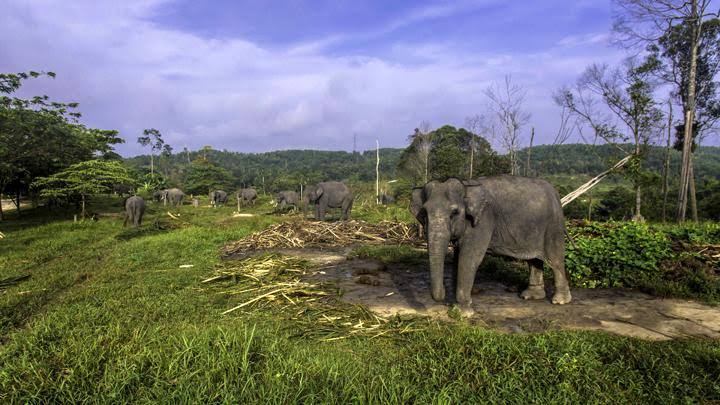LAMANRIAU.COM, PEKANBARU – Until June 2019 there were 30 cases of Elephant conflict with humans occurring in Riau. This number increased compared to the same period last year. Data obtained from the Riau Natural Resources Conservation Center (BBKSDA), last year there were only 16 elephant and human conflicts.
According to the Coordinator of the Riau Forest Rescue Network (Jikalahari), Made Ali, the main cause of animal and human conflicts is shrinking the natural habitat of animals in Riau.
Made said, the conflict between animals and humans is not only with elephants but also Tigers. “The deforestation rate in Riau is quite high. And this greatly affects the movement of animals in their natural habitat. As a result, human contact with animals also occurs,” he said on Wednesday. (7/17).
Made gave an example of the reduction of natural forests in Kerumutan landscape. If in 2005 natural forest there was still an area of 512,972 hectares, currently only 285,659 hectares are separated.
Head of Riau BBKSDA, Suharyono, said that Sumatran elephant habitat in Riau is currently fragmented by Palm oil plantation and Industrial Plantation Forest (HTI). This makes the opportunity for contact between humans and elephants to occur.
“The elephant roaming space is fragmented in Riau. So the area that used to be an elephant playing area, some of which have changed functions. That’s why human-elephant contact occurs in Riau,” he said.
Elephants’ conflicts with humans will usually be reduced by BBKSDA by driving elephants out of residential areas. These efforts often involve a tame herd of elephants who have been trained in BBKSDA. In Riau alone there is an Elephant Training Center (PLG) in Minas District, Siak Regency. This facility is a place for BBKSDA to tame the trunked animals.
Based on World Wild Fund (WWF) data, the distribution of elephants in Riau is increasingly concentrated in protected forest areas, including in Giam Siak Kecil 50-60 birds. Then in the North Tesso Nilo region 30-38 tails and in Southeast Tesso Nillo 50-60 tails. (gtc)










